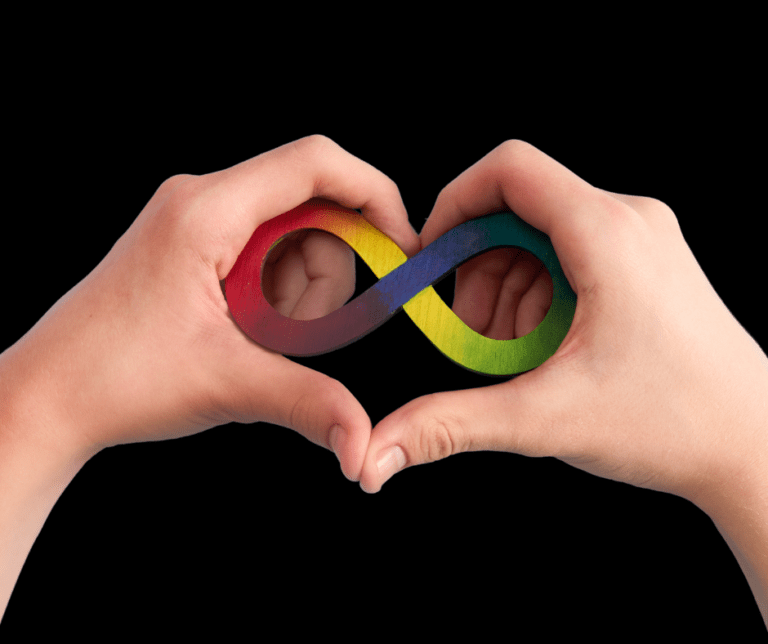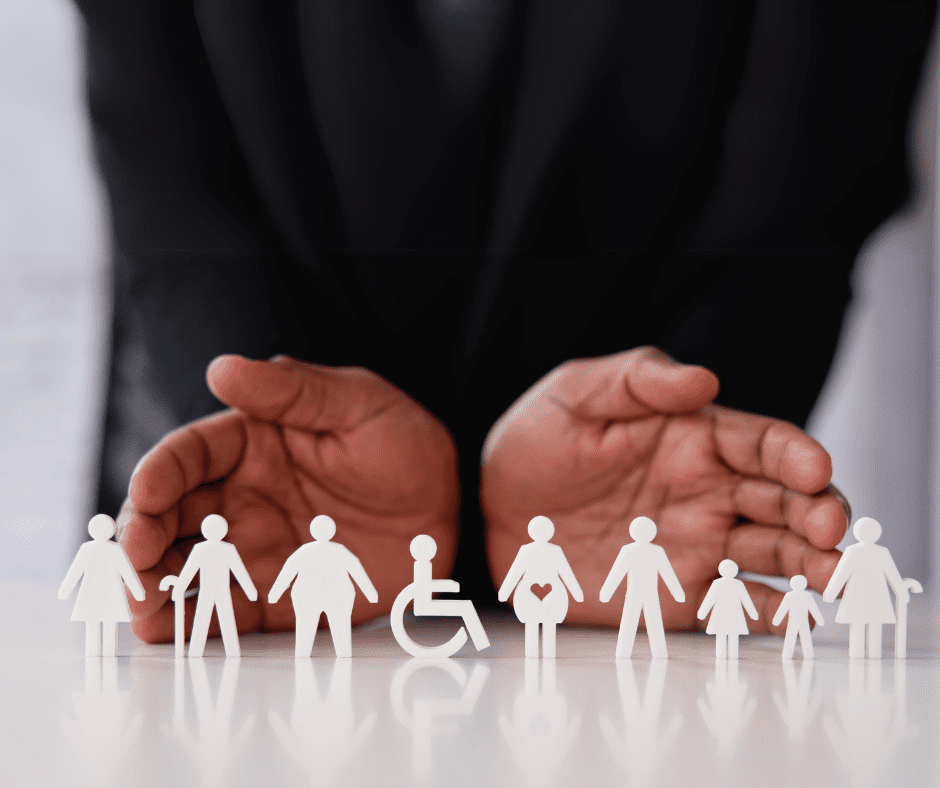
Exploring neurodiversity brings new perspectives for practicing, teaching and researching mindfulness. This blog post was originally written for the International Conference on Mindfulness (ICM:2024), edited and republished here. Emily Corsellis, a neurodivergent member of the conference EDI advisory working group, answers questions on neurodiversity and explains our endeavours to create neurodivergent-inclusive offerings.
What does neurodiversity mean?

Neurodivergence is an umbrella term that encompasses neurologies such as autism, ADHD, dyscalculia, dyslexia, dyspraxia, OCD, Tourette’s syndrome and synaesthesia. In the same way that there is no such thing as a typical neurotypical, there is no such thing as a typical neurodivergent person: the experience and expression of neurodivergence is individual; it is common for a neurodivergent person to have a mix of different traits and a ‘spiky profile’; and we are just as influenced by our socialeconomic background, race, gender, disability, sexuality and other identities as people within the neuromajority.
The neurodiversity paradigm is based on two assumptions. First, that typical neurodevelopment is neither superior nor inferior to divergent neurodevelopment. The neurodivergent community – led by neurodivergent voices – is moving away from the medical model of ‘disorders’ and towards person-centred and biopsychosocial models (e.g., Whelpley et al., 2023). Second, that all people deserve to be treated with dignity and respect, independently of how they diverge from a putative norm. The neurodiversity paradigm is explicitly inclusive of all neurodivergent people, including those with the highest and most complex support needs and, increasingly, those who self-identify as neurodivergent due to waiting for, or issues accessing, safe diagnostic assessments.
Why is neurodiversity important to consider in the mindfulness field?
It is estimated that 15-20% of the population is neurodivergent (Doyle, 2020), and so mindfulness teachers and researchers are likely to have people who are neurodivergent in their class or research study. Maybe the teacher or researcher is neurodivergent. The individual may or may not be aware of their neurodivergence.
Neurodivergent individuals are likely to experience the world differently from the neuromajority. Welcoming neurodivergent ways of thinking and being challenges our views about how cognition and interoception ‘should work’, opening up new ways of experiencing the world.

Teachers need to know how to include and support neurodivergent participants, both through neurodivergent-sensitive options during full group teaching and the provision of accommodations and support to individuals. Suggested frameworks and activities within mindfulness interventions may not be meaningful for neurodivergent individuals. We need to be able to validate individual experience and get curious when this takes us to places beyond common maps. This is also true for teacher training and supervision: support for neurodivergent trainees should ideally include input from experienced neurodivergent meditators.
Teachers also need to know that neurodivergent individuals experience a higher incidence of mental ill-health and trauma due to a range of factors including stigma, minority stress, masking and iatrogenic harm (harm arising due to medical care). Research indicates that mindfulness can be effective in reducing mental distress for some neurodivergent individuals, but further work is needed. Neurodiversity-affirming and trauma-informed approaches for students, professionals and participants are important for safe-guarding mental health (Shaw et al., 2022; Hartman et al., 2024).
Mindfulness researchers need to know that a significant minority of any population sample will be neurodivergent, and to consider inclusion in participant demographic information. Research into the experiences of neurodivergent meditators is a growing area, with consideration given to the potential broader perspectives offered by adopting the neurodiversity paradigm (Pellicano and den Houting, 2022) and the use of best practice in participatory and inclusive research methods (e.g., den Houting, 2021; AASPIRE, 2022).
What are some common misconceptions about neurodiversity, and how can we address them going forwards?
There are common myths and misconceptions about each of the type of neurodivergence, but they are too numerous to mention! Every human is different, be they neurodivergent or neurotypical, so a key consideration is not making assumptions and engaging with each person as an individual.
It is often assumed that neurodivergent people are just one ‘thing’, i.e. just autistic or just dyslexic. This is rarely the case and there is a high incidence of ‘co-occurring conditions’. An alternative way of thinking about this is that current diagnostic categories may not reflect more complex, individual realities (Fletcher-Watson, 2022). This again highlights the need for people to be treated as individuals.

Some people think the term neurodivergence only applies to people who have lower support needs. This is not the case. Neurodivergent individuals who have profound intellectual and multiple disabilities (PIMD) are included under the neurodivergent umbrella. The inclusive approach is important due to the variety of individual experience, as well as the extent to which traits and capacity can fluctuate depending on the environment. Some neurodivergent people consider themselves to be disabled, while others do not.
If you think you don’t know anyone who is neurodivergent, here are a few high-profile examples: actors Daniel Radcliffe (dyspraxia), Dan Ackroyd (autism) and Salma Hayek (dyslexia); gymnast Simone Biles (ADHD) and World’s Strongest Man Tom Stoltman (autism); poet Amanda Gorman (sound hypersensitivity) and singer Billie Eilish (Tourette’s syndrome). Some companies are pursuing neurodivergent employees because they are convinced of the value diversity brings in terms of innovation, creativity and problem solving (Deloitte Insights, 2022; Johnson, 2024).
How can mindfulness teachers and practitioners contribute to creating a neurodivergent-affirming environment?
We can all inform ourselves about neurodivergent-affirmative approaches (e.g. Hartman et al., 2024; Naylor, 2023) and show respect for different ways of participating e.g.
- Sensory experiences. Busy, crowded, bright spaces can be overwhelming and impact a person’s ability to engage. Some people may need to wear sunglasses and/or ear defenders to manage their sensory input and take quiet breaks to self-regulate.
- Processing times. People take different amounts of time to process information and respond. Longer processing times may just mean they are working with more information; it does not mean they aren’t paying attention or capable of engaging.
- Movement and stillness. Some people may need movement during meditation practices. This might be an aid to focus or concentration rather than an indication that they are distracted and not focusing.
- Social batteries. Meeting new people can be particularly draining for some people. Selective attendance and staying off-screen during virtual events are important energy management tools, not signs of lack of commitment.

Language and diagnostic labels are historically contingent, and talking about these topics can be challenging. We all get language wrong at times and have limited understanding of other people’s worlds. Attendees are invited to be part of creating and holding spaces for exploration and learning for all.
Approaches set out in multicultural agreements are relevant to supporting neurodivergent-affirming spaces and acknowledge intersectionality e.g. the East Bay Meditation Center agreement includes:
- Try It On. Be willing to “try on” new ideas, or ways of doing things that might not be what you prefer or are familiar with.
- Practice Self Focus. Attend to and speak about your own experiences and responses. Do not speak for a whole group or express assumptions about the experience of others.
- Understand The Difference Between Intent & Impact. Try to understand and acknowledge impact. Denying the impact of something said by focusing on intent is often more destructive than the initial interaction.
- Practice “Both / And”. When speaking, substitute “and” for “both.” This practice acknowledges and honours multiple realities.
What initiatives or actions is the Mindfulness Network taking to support neurodiversity among attendees?
The Mindfulness Network is committed to Equality, Diversity and Inclusion (EDI) – we have a monthly EDI advisory working group alongside colleagues at Bangor University’s Centre for Mindfulness Research and Practice (CMRP). Neurodiversity-inclusive conference design was a key part of our discussions in advance of the International Conference on Mindfulness in Bangor in August 2024, where we looked at a range of resources. We recognise the need to be flexible and learn as new information becomes available. We are learning from principles of Universal Design, disability inclusion and multicultural agreements. We took inspiration from other conference organisers, e.g. “ A toolkit for creating radically inclusive grassroots events” (Adams et al, 2023) sponsored by Equality, Diversity and Inclusion in Science and Health (EDIS), and EDIS reflections on running inclusive symposia (Craig, 2024). We are aware of the risk that neurodivergent spaces can place too much emphasis on the interests and experiences of white, autistic individuals (Sutherland et al., 2024), so we are working to honour broad inclusion and intersectionality.

Here are some examples of resources we’ve considered and actions taken during the conference which will feed into our work going forwards:
· Accessible website design. We shared suggestions and inclusive design guidelines with the web design team (e.g. Pun, 2016; Frankowska-Takhari & Hassell, 2019). They reviewed the website and made changes such as including a transcript of the introductory video, removing dynamic graphics, and ensuring logos had easily accessible text explanations.
· Early information on accessibility. There is an increasing amount of information about creating ND-inclusive physical environments (e.g. BBC, n.d.; ASAN, 2021; Napolitano, 2023). The conference team created a web page with an explicit commitment to inclusion, details of the conference venues and links to venue accessibility information. Participants were invited to contact the organising team if they have particular support needs.
· Creating a safe space. The EDI advisory group pooled information on creating psychological safety including what it means to be ND-affirming (e.g. Hartman et al., 2024). Conference organisers are considering how to support everyone to turn up authentically and to feel welcome and supported whether online or in-person.
· Raising Awareness. Our presence on the EDI advisory group helped amplify the need to hear from neurodivergent voices when planning not only this conference but the work of the Mindfulness Network and Bangor University’s Mindfulness Centre going forward.
We acknowledge we will not get everything right and ask you for your patience and support. We aim to be realistic and transparent. We aim to learn continuously, review conference feedback, and take lessons learned into the organisation of future events.
We also invite you to reflect on this approach for yourself and hold it in mind when taking part in our events, both in-person and virtually. The philosophy of mindfulness can be deeply supportive in creating a neurodivergent-affirmative environment: being curious, kind, experience-led and non-judgemental provide the space for difference to be welcomed and celebrated.





One comment on “Navigating Neurodiversity and Mindfulness”
Iga
December 20, 2024 at 10:31 amAre people with depression or anxiety be considered as neurodivergent? This is not mentioned in this article.